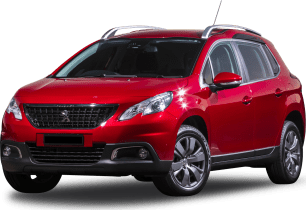It’s not the sportiest drive in the small SUV space, but it’s not trying to be - and that’s totally fine, if you ask me. But it does enough to appease the majority of buyers who want a bit of grunt, while also offering a mostly comfortable experience for the driver and other occupants.
The 110TSI Style’s 1.4L turbo petrol engine is punchy and offers enough pulling power for most people’s needs – in fact, it probably proffers more than what most people need. And that comes down to the torque that’s available, plus the way the engine revs - cleanly from low in the rev range, with a linear nature to it that non-turbo engines just can’t match.
If you’ve read many of our other reviews on VW models with DSG dual-clutch automatic transmissions, you’ll probably know they can be a little twitchy and lurchy in low speed driving, while at higher speeds you can hardly tell they’re working away diligently.
But the T-Roc 110TSI doesn’t have a DSG - it gets an eight-speed automatic transmission, which is definitely geared for efficiency and has a tendency to upshift a little too early in a lot of situations. While the standing starts, reverse parks and urban traffic snarls are dealt with very easily by this transmission, the upshifting is a little too eager as speeds rise - you can set off from a standing start and, before you know it, the little indicator on the dash tells you the car is in sixth gear, and you’re only doing 55km/h.
If you’re just going around town and flat surfaces that won’t be too much of an issue, it’s when you start to encounter any hills or if you’re at highway speeds that you might find the transmission’s overactivity a little annoying. But it is still smooth and smart in the way that shifts, it’s just a little busier than you might think it should be. I found shifting it to S/sport mode in the transmission made it hold gears as long as I’d like, and while that will probably have a slight fuel use penalty, the drivability is improved.
If you’re an urban commuter or have a young family and you do a lot of jump-in-and-go style driving, I still I think this eight-speed auto will prove more amenable in low speed driving, and certainly more city friendly than a dual-clutch because it doesn’t require any thought when you’re taking off from a standstill or parking at the shops. I even used the auto parking system down the street at the shops, and it was a far less nerve-wracking experience as you don’t have to factor in the twin clutches and any lurchiness they may offer.
The T-Roc’s steering is excellent, and as you would expect from a Volkswagen it’s light, accurate and direct. It offers a bit of feedback through the wheel as well.
Traction in the wet is often an issue for front-wheel drive vehicles with this much torque, but it’s never to an annoying or unsafe degree in the T-Roc 110. Some rivals do offer more axle tramp (where the front wheels bounce up and down as the tyre tries to get traction); this one is nicely resolved.
The suspension - Macpherson front suspension and torsion beam with coil springs at the rear - is mostly very good, with a good balance to the chassis and it handles corners really nicely, although as mentioned in the video, there can be a slight sharpness to the ride over shop edged bumps. That’s the price you pay for 18 inch wheels with low-profile tyres.
It is a very quiet car, offering little road noise on coarse-chip surfaces for a car running these size rims, and it is very refined generally. The engine stop-start system works decently - it’s not annoying like it is in versions of Volkswagens with a turbo engine and a dual-clutch transmission.
Overall it’s a very impressive drive experience – not the sportiest small SUV out there, sure. There aren’t even drive modes to choose from, and no paddle-shifters, either. But if you want a sportier small VW SUV then you need to buy the 140TSI Sport - but for 90 per cent of buyers this is going to be better than adequate.


















































 copy.png)




.png)








